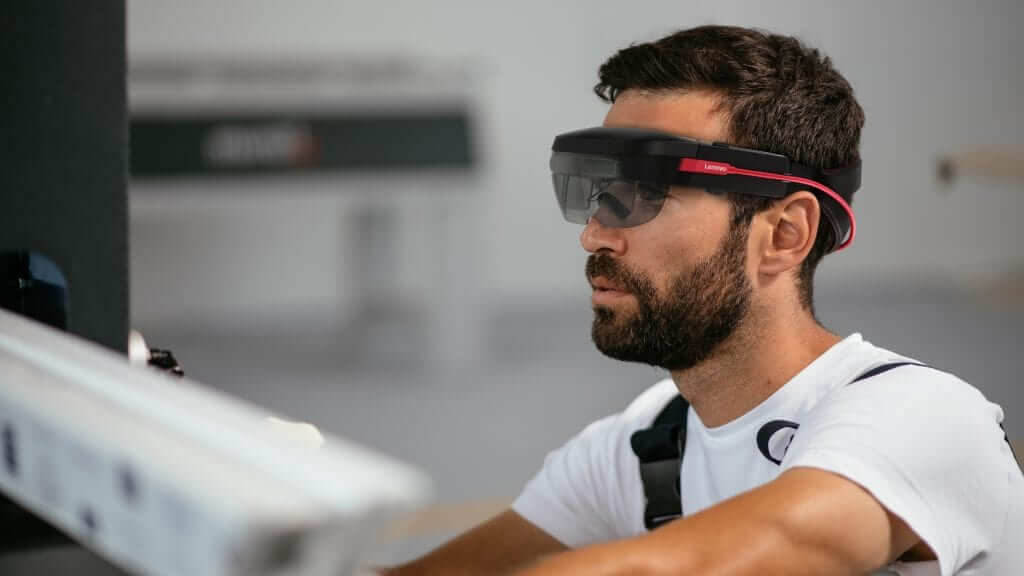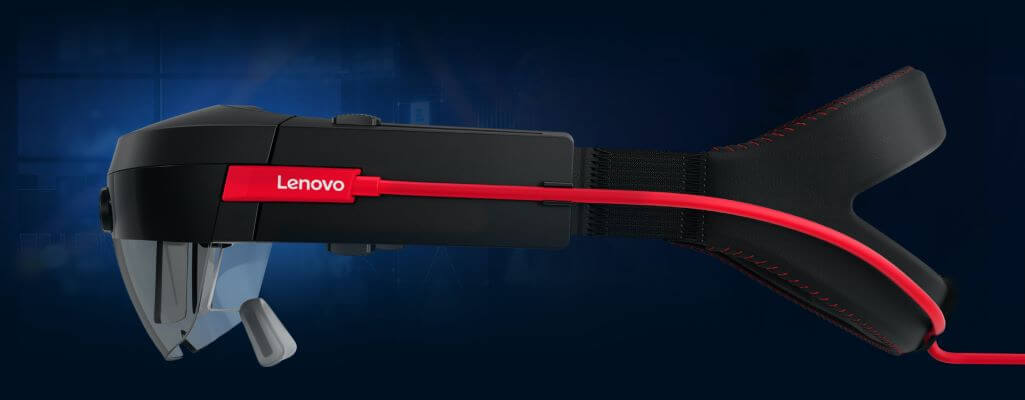Lenovo is behind some of the most exciting things happening right now in conventional computing. So, their involvement in spatial computing is more than a little exciting.
The company’s commercial AR/VR Lead, Nathan Pettyjohn, who is also the president of the VR/AR Association, reached out to share the good word.
ThinkReality
“[ThinkReality] is our brand within Lenovo for our commercial AR and VR solutions,” Pettyjohn said in a recent video interview.
ThinkReality has been around for over a year, but like many XR industry players, they’ve found themselves working overtime for the last few months.
“There’s been a subset of enterprises that have realized a more significant need to deploy remote assistance solutions,” explained Pettyjohn. “There are definitely some customers that have really accelerated the need to get this in place.”

As a major player in computing, Lenovo works with a number of clients that were also using extended reality technologies. So, to create a suite of XR solutions, the company reached out to clients that were already using XR to see what obstacles they were facing. Most of them listed the same problems.
The ideal industry solution would be hardware and cloud agnostic, but would also have security measures for the posting of proprietary information.
“Most of the Fortune 500 companies that we service already in other areas were saying ‘we believe in the technology, and what it can do for us, we’ve just got to figure out how to scale it’,” said Pettyjohn.
Most architecture, engineering, and construction clients aren’t interested in creating an experience in the same way that consumer groups are. In other words, they want the benefits of the application without getting lost in the weeds programming it.
“A lot of our customers wanted more turnkey solutions that they could bring to market without having to build their own custom apps,” said Pettyjohn. “So we recently announced a partnership with holo-one.”
holo-one is a cloud-based MR software suite designed for enterprise.
Software Suites and Packages
Because clients wanted hardware and cloud agnostic solutions, ThinkReality focused on software tools first. They decided to base everything in the massively popular 3D development platform Unity.
The suite of solutions also works through back-end software developer kits rather than an app store-style experience. This also allows developers to put in as much or as little effort as is required to create their experience rather than having prepackaged options.
Phantom View is a Baker Hughes solution supported on ThinkReality hardware and platforms. The solution is used for quickly rendering large assets and displaying them on head-mounted displays in real time. ThinkReality is also working on as-yet-undisclosed partnerships to create efficient pipelines for transferring existing digital assets.
As a part of the Lenovo family, ThinkReality is also in communication with working groups within the larger company to leverage approaches and applications that are already being used in other sectors, like 5G and edge computing.
“There’s great opportunity to leverage hardware and software as well as these advances in new networks,” said Pettyjohn. “This will all enable a transition into utilizing smart glasses as an interface.”
A Focus on Soft Skills
Not all applications are all about AEC and digital assets. One of the fastest-growing applications for XR technology is soft skills training. That’s things like interpersonal communication that are required for the job but can’t be learned from a book. The conversation moves into the skills gap in skilled labor resulting in the Baby Boomer generation leaving the workforce.
“You’ve got a shift in the skilled workforce where you have a lot of the Baby Boomer demographics that are starting to retire, that are very highly skilled, and then you’ve got the Millennial generation that is now entering the workforce that is more tech-savvy,” said Pettyjohn. “Leveraging augmented reality, mixed reality, even virtual reality in the work environment, there’s higher retention levels and a faster path to training.”
ThinkReality initially became involved in soft skills training through XR by working with an immersive learning platform Uptale.
“It really kind of gives us an early start to this comprehensive solution set,” said Pettyjohn. “When we talk to enterprise companies we can say you can build, you can manage, you can deploy, you can do it across AR, you can do it across VR, and you don’t have to be constrained to just our devices or just our cloud environment.”
Hardware
Of course, the comprehensive solution set has to include hardware, and indeed it does.
The A6 AR Headset
The A6 is a fully-featured AR headset with inside-out 3DoF tracking, optimized for the ThinkReality platform.

While it isn’t required to run ThinkReality and other platforms work on the headset, the two are best when used together.
With gesture support, and voice controls, the headset is good for learning scenarios as well as in-the-field use. An SDK also allows image recognition through a partnership with Wikitude.
VR Headsets
If you’re a regular reader of ARPost, you might have seen a recent article on Pico offering the last enterprise 3DoF headset. Pettyjohn kindly informed me that that’s only half true.
ThinkReality announced the Lenovo Mirage VR S3 3DoF headset at the VR/AR Association Global Summit. The headset was made in collaboration with Pico, and Pettyjohn described it as a “modified version of the G2 4K” optimized for ThinkReality solutions.
The Mirage Solo standalone 3DoF headset is also still available and fully supported, despite the early integration with Google’s now discontinued Daydream platform. While the Solo is primarily marketed towards consumers and education, it can still be handy for some enterprise applications including soft skills training.
“There’s still a pretty big need to have soft skills training that can scale really easily and not require someone to learn on a 6DoF type of experience,” said Pettyjohn. “It makes it really easy for a lot of companies to say ‘I need a thousand of these devices so I can start training people,’ and then they can do that pretty easily.”
ThinkReality’s appreciation for enterprise 3DoF started working with the Solo in a classroom setting. There they found that 3DoF isn’t only sufficient for education applications – it’s comparative simplicity often makes it better.
“We found that a 3DoF system was actually ideal for a classroom setting where you have twenty or thirty kids that need to use the device,” said Pettyjohn. The same general rule goes for enterprise applications.
A Leader in the Space
Many of us have trusted Lenovo for conventional computing applications for years. Their having a more agile unit dedicated to XR technologies can only mean good things. As Pettyjohn put it,
“We think [XR] is a trend that’s going to stay and Lenovo feels like with the customer base that we already have we need to be a leader in this space so there’s a lot of commitment in our teams to doing that.”
Naturally, we’ll try to keep in touch with Lenovo about their ongoing partnerships and innovation in the space.




